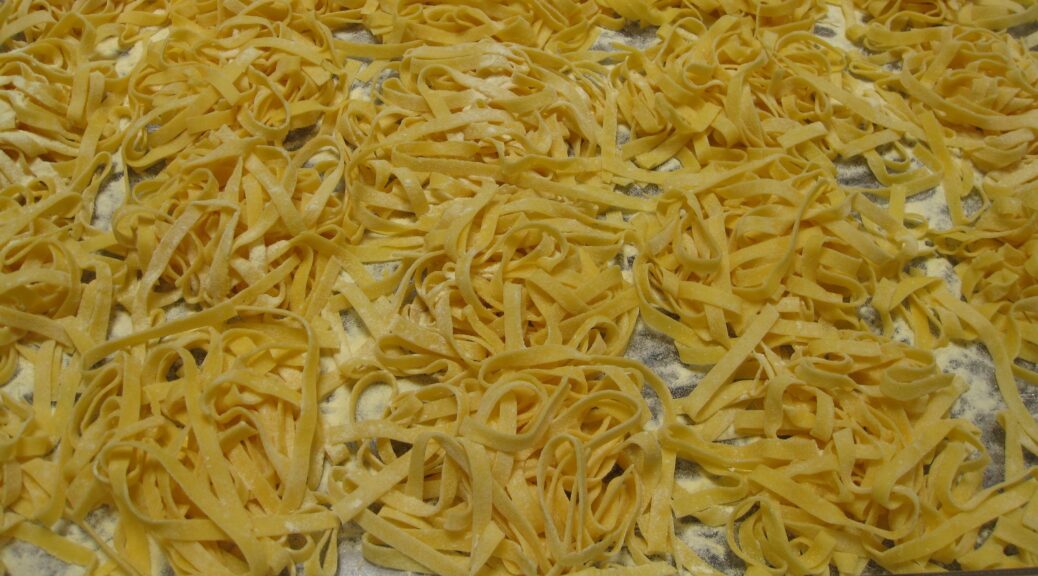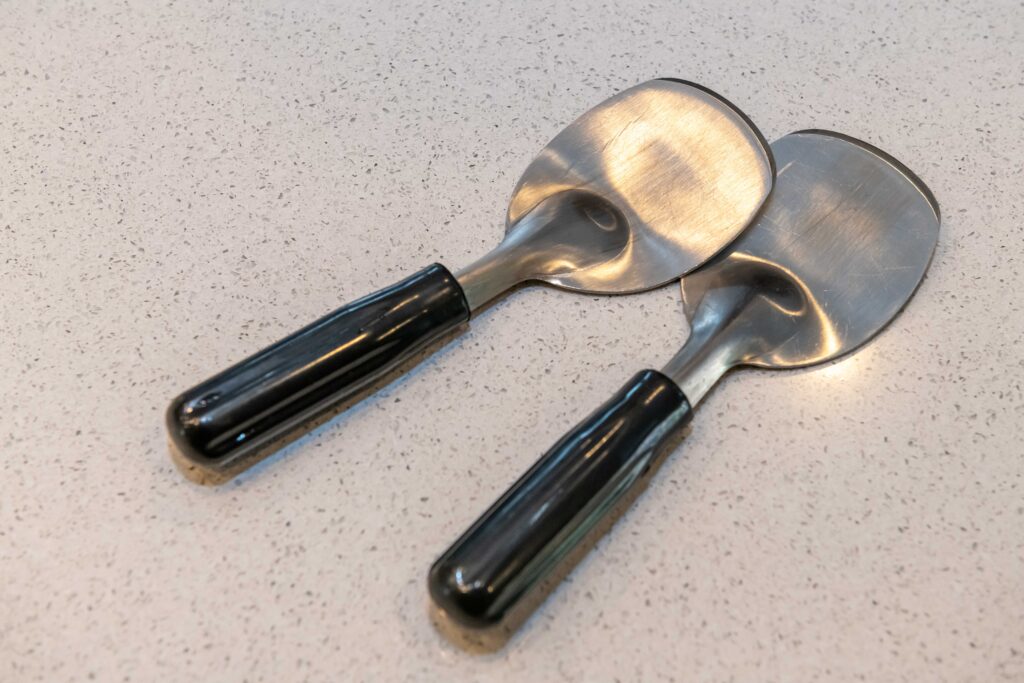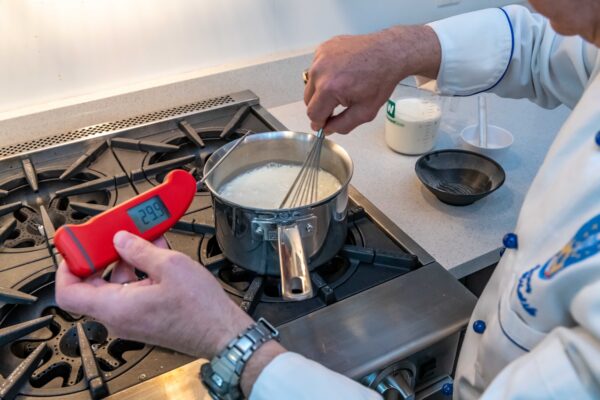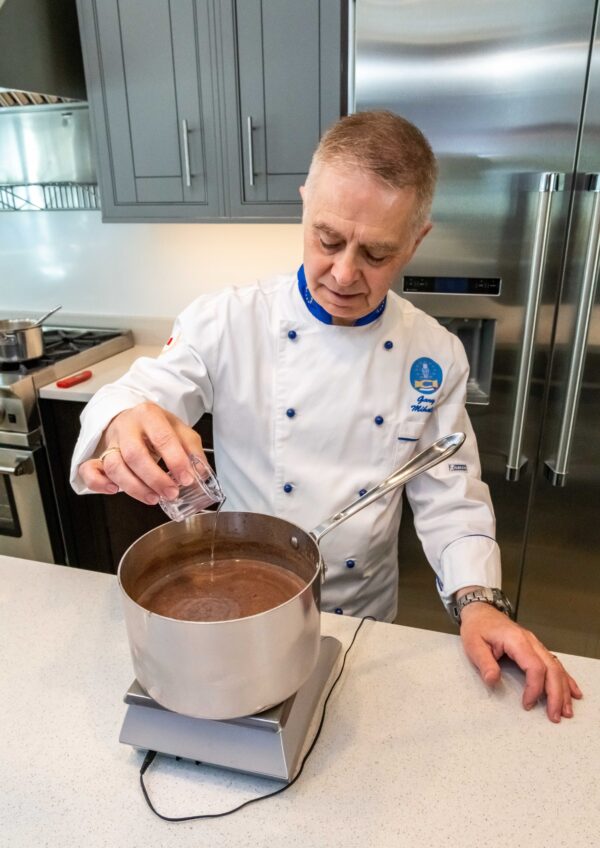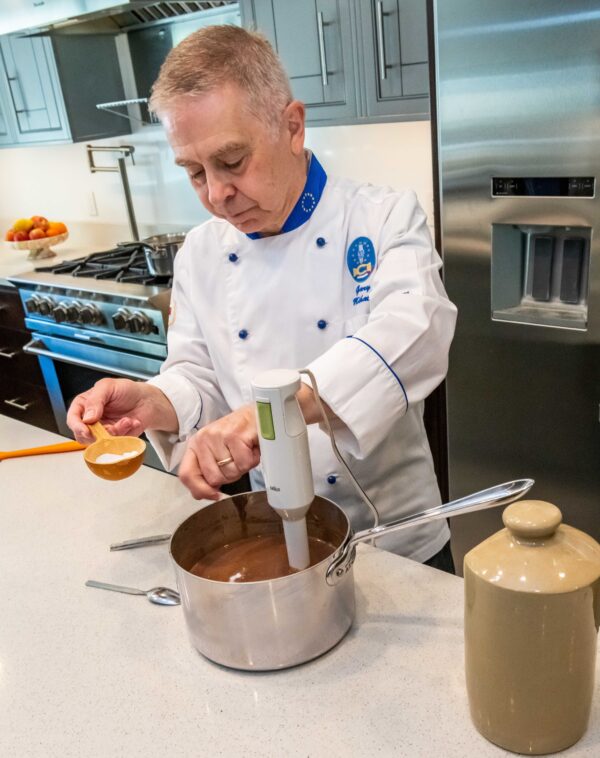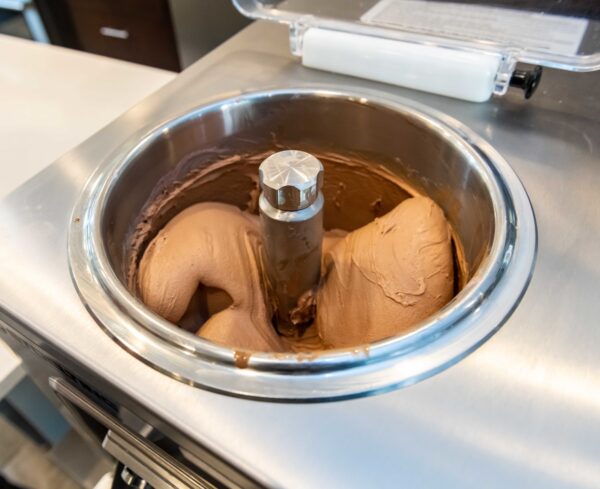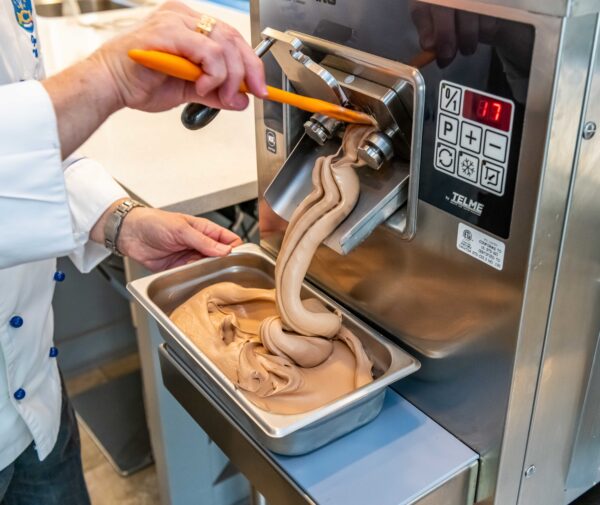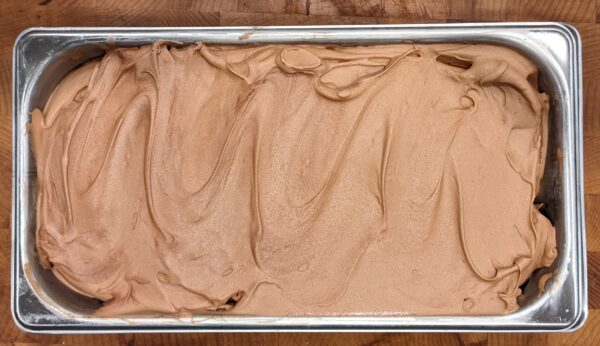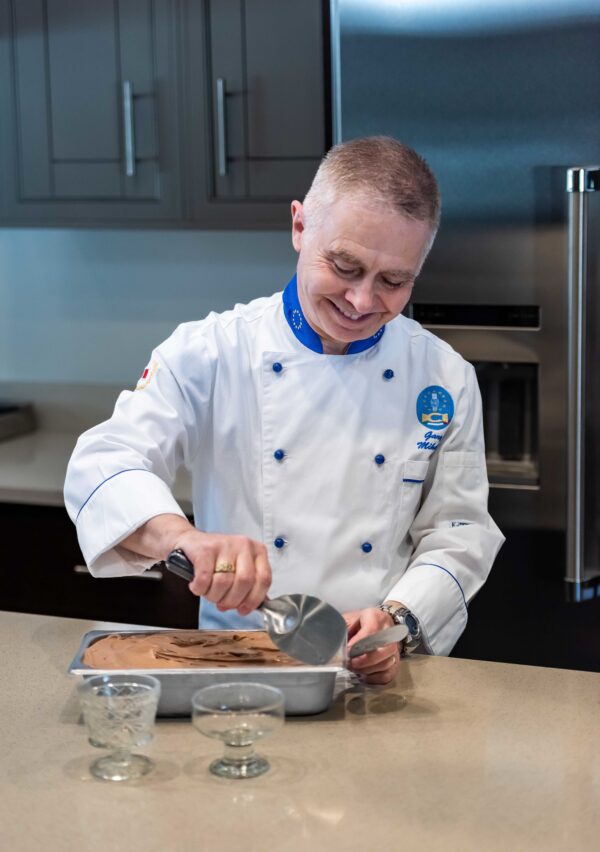29 May 2025
Earlier today I sat down to write a blog post and recipe for Lasagne Bolognese. Americans use the word Lasagna but in Italian the correct word for the dish is Lasagne, with an “e” on the end.
After drafting a few paragraphs, I thought about the different component parts that were needed for the lasagne: Ragù Bolognese (for which I’ve posted two recipes), fresh pasta (for which I haven’t published a recipe), and besciamella (for which I also haven’t published a recipe). Deciding that the post would be way too long if I needed to include two additional recipes, I decided to back up a bit and publish recipes for fresh pasta and besciamella and then get on to the business of publishing a recipe for Lasagne Bolognese.

I use a vintage pasta machine that is probably 60 years old. These are sheets of pasta destined for Lasagne Bolognese.
Given the amount of fresh pasta that I make, I’m surprised that I haven’t ever published a recipe. It’s been on my list of recipes to publish for years now but it’s never happened, until now.
Although I made fresh pasta before attending culinary school in Italy, it was in culinary school where I really became comfortable with the process. The corollary is that my recipe for egg pasta uses Italian flour and is done in metric measures.
Join our mailing list and you’ll never miss a recipe again!
Unless you’ve been making pasta for a long time (in which case why would you be reading this blog post), you should use a digital scale. It will make the entire process nearly foolproof (and much easier).
One of my favorite ways to cut pasta is with a chitarra. Chitarra means guitar in Italian. This device is actually strung with guitar strings that cut through the pasta when you roll it with a rolling pin.

I also encourage you to turn your digital scale to the metric setting, even if you’re not comfortable with that system. Set the scale to measure in “grams” and you’ll be all set.
Italian flour is categorized by the fineness of the grind (00 being the finest) and the extensibility (stretchiness when mixed into dough), noted by W-values ranging from about W-90 to W-400. Although not as precise, in terms familiar to Americans, all-purpose flour is more extensible than cake flour and bread flour is more extensible than all-purpose flour. The issue is that there are no standards and there is considerable variability from one brand of flour to another.
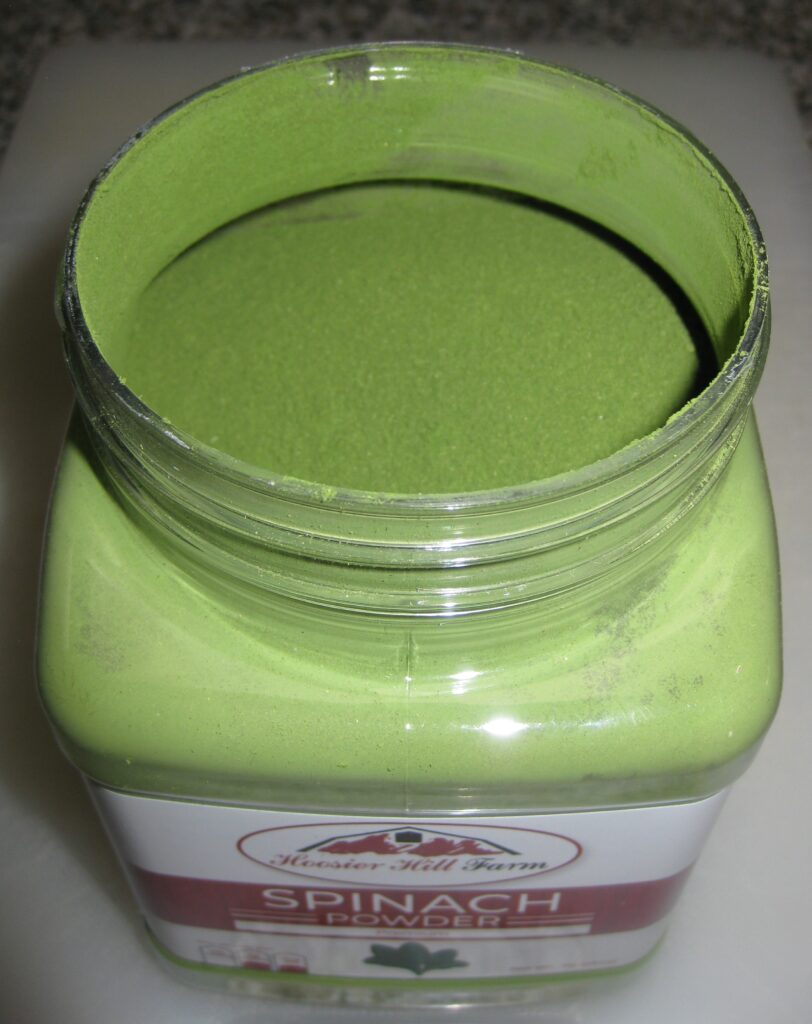
The traditional way to make green pasta is with fresh spinach. Because of the moisture in the spinach, the proportions are different from the ones in this recipe. However, using 8 grams of spinach powder in place of 8 grams of flour makes spinach pasta easy to accomplish.
For this recipe, you want a 00 (double zero) flour with a W-value around 180 to 220. My recommendation is to go online and buy Paolo Mariani flour for “Pasta Fresca.” If you really get into making pasta and you develop a “feel” for the dough, you can begin to substitute other flours if necessary. In the beginning, however, it is much easier to use a known product.
When I started this blog in 2017, I lived in Santa Fe, New Mexico at almost 8000 feet in elevation. I became very sensitive to the effect of altitude on cooking and baking. When I moved to Palm Springs, at almost sea level, I thought my days of making adjustments based on location were behind me. Not so. The dry air in Palm Springs means that many recipes need extra liquid. This recipe is no exception. Without adding more egg, I found that I was not able to incorporate all the flour the way I could when cooking in Italy.
Black pasta is dramatic. Nero di seppia (squid ink) is usually sold in 4 gram plastic pouches, several pouches to a box. Use 8 grams (two pouches) in place of 8 grams of whole egg and follow the recipe below.
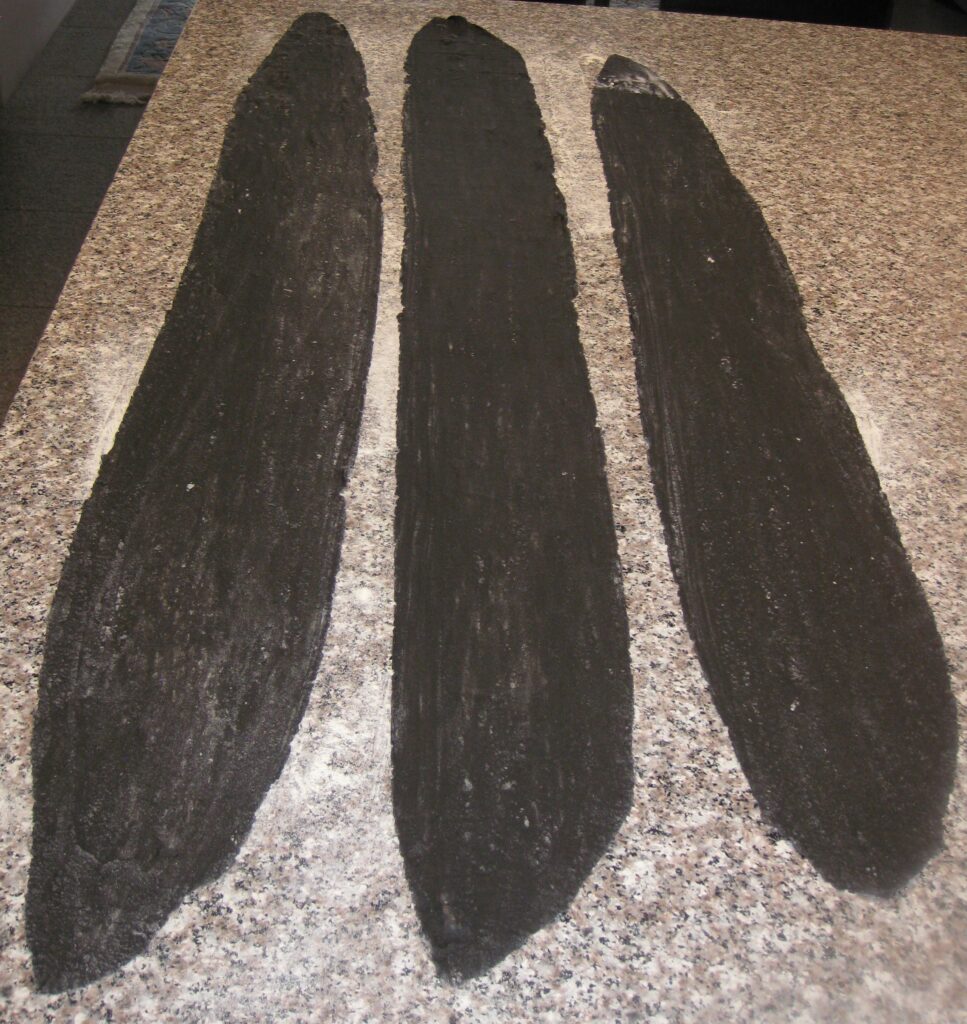
- Mix the flour and salt in a large bowl.
- In a separate bowl, combine the whole egg and egg yolk, and gently mix together with a fork.
- Make a depression in the center of the flour. Add the egg mixture and begin to mix the flour into the egg with a fork. When the dough becomes too stiff for the fork, scrape everything onto a work surface.
- Change the fork for a bench scraper and your hand. Slide the scraper partway under the flour-egg mixture and then flip it over to bring the flour that was on the bottom to the top. Use your hand and the bench scraper to press the mixture together to fully combine the flour and egg.
- When the mixture becomes firm enough, you can stop using the bench scraper and use your hands to press and turn the dough until it is homogeneous. Use a pressing motion, not a kneading motion the way you would for bread. That is, press down on the mixture, not out and away from you.
- Once the dough is homogeneous, form it into a brick shape and wrap very tightly (and I mean very tightly) in plastic wrap. The pressure will further help the dough to hydrate. As an alternative to wrapping the dough in plastic wrap, you can vacuum seal it in a sous-vide bag.
- Allow the dough to rest at room temperature for 60 to 90 minutes, until it does not spring back quickly when gently depressed with a finger.
- Portion, roll, and cut as required for the recipe.
Tip: This dough cannot be rerolled as it will not bond well to itself after rolling. Any scraps can be cut into irregular pieces, called maltagliati in Italian, air-dried for use in soup.
Copyright © 2025 by Villa Sentieri, LLC. All rights reserved.

